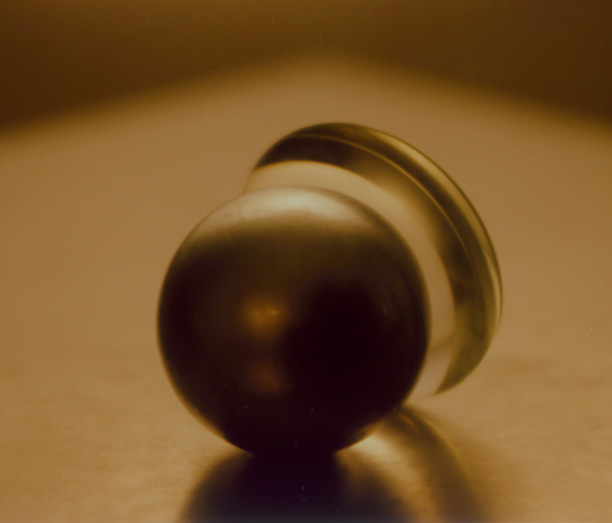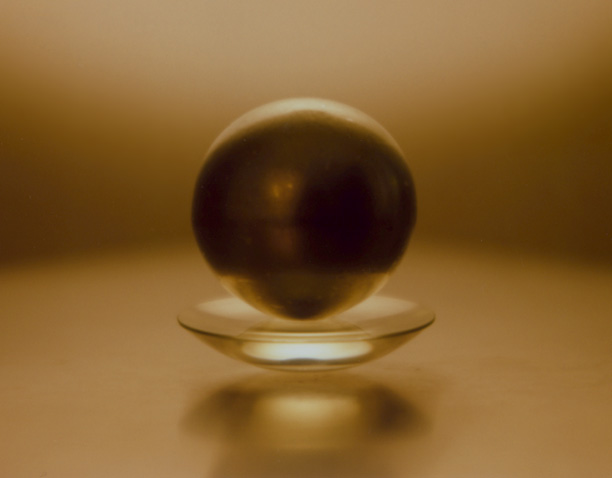The B&L 253.5mm AeroTessar - Soft Focus by unscrewing the rear element of the front group
I first purchased the 610mm F6 Aerotessar and considered myself fortunate to get one until I found out how heavy it was, w/its military casing, it weighs close to 35-40 pounds. I had Turner Precision take some t6061 pipe stock and machine/duplicate the original casing/threading, but that still left me w/a lens weighing a prohibitive 30 pounds.
I can still use the lens on my Toyo 810, but I've got to support my front ext. bed with an add. lightstand to keep the lens from bending the ext. bed, now if I want to reframe I've got to dis-assemble the whole set-up. The solution is to machine a very costly mod. to my Ries head to support the front of the Toyo w/the 610mm AT aboard. I intend to do this in the future, but this whole project is/was looking 'long ago' and 'far away' for now.
It's been said the AeroTessar is optimized for the red end of the spectrum, and I love the 'Carl Zeiss' glow/sparkle this lens seems to have, a look I remember from my Rollei days when I swore by Carl Zeiss. I also wanted to play w/unscrewing the rear element of the front group of the AeroTessar using it as a SF lens. The rear element of this AeroTessar is frozen and I've got it a Dean's camera repair where Dean will try to get it loose.
In the meantime, another AeroTessar, a 253.5mm, came on the market. I had no idea the lens came in this FL, but I was able to purchase it from Ken Osthimer. The lens is very contrasty, very sharp, and the rear glass of the front group is easily unscrewed which allowed me to use this lens as a SF lens in the same way ala the Velostigmat II.
The AeroTessar was never intended to be used like the Velostigmat II, and thus the rear glass of the front group unscrews backwards in the direction of the rear cell. You have to take the front cell off, and then unsrew the rear glass of the front cell if you want to take it off. There's a very small gap between the front and rear cell which is taken up by the lens iris diaphragm so you can only unscrew the back of the front cell a 'smidgeon' before you impinge on the iris diapragm and the rear cell.
The fix to be able to use this lens like a Velo II w/diffusion control is simple, take off the front cell, unscrew the rear glass out as far as it will go if you like(I use low residue blue tape to hold it in position after I unscrewed it out to whatever position), and then screw the front cell back on, but only in a couple of cycles/revolutions. You'll now have the same configuration as the Velostigmat II w/diff. cont., the threads of the front cell are showing, the proviso being my 253.5 AeroTessar is way smaller than my 300mm Velo and a diff. FL, so you won't be able to screw out the rear glass as far, maybe about 60-70% of the what you can do w/a Velo II.
I've uploaded 3 images, '25Watt', 'Mag Sphere', and 'MagSphere II, which I think gives an idea of some of the diff. bet. the AeroTessar and the Velo II. What I did, and my first impressions........these images were shot w/the rear glass of the front cell unscrewed out to 2 positions, the first position was about a third of the way before you end up screwing the glass all the way off, the 2nd pos. was about 60% all the way out.
The AT combined w/fuji 4x5 instant film compresses highlights in a very pleasurable way, w/this lighting scheme and the highlights bouncing off the bulbs in the '25Watt' image, I would've had pronounced flare/plenty of glow from several of my other lenses if I'd used them on this image. The lens has a smooth/sharp/contrasty sparkle whereas I think the Velo gives a softer rendition with plenty of glow when using it screwed out quite a ways.
I love the look, and think that this lens is a wonderful 'sidekick' to the Velo II, w/the 2 lenses providing you with a great deal of range in terms of how you want to render a particular subject matter.
I've got a bad habit of mentioning 'Soft Focus', this lens is very good at rending a 'Smooth' texture to the surfaces of the subject matter.



![[Your Site Name] [Your Site Name]](/storage/WideOpen%203%20tst2.jpg)

Reader Comments